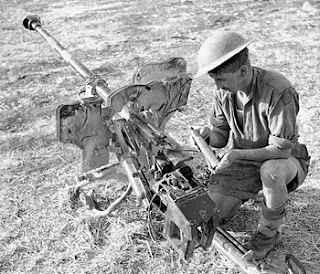
sPzB 41 combined good anti-armor performance at short range and high rate of fire with small, lightweight (for anti-tank gun), dismantleable construction. However, it also had several shortcomings, such as:
The barrel was hard to manufacture,
and had short service life (about 500 shots).
Very weak fragmentation shell.
Use of tungsten for armor-piercing shells.
Short effective range.
Relatively weak behind-armour effect.

An lightweight version of the sPzB 41 in use in France 1942.
Another captured by the Brittish, Sicily 1943.

sPzB 41 was used by some motorized, divisions and by some Jäger (light infantry), Gebirgsjäger (mountain) and Fallschirmjäger (paratrooper) units.
Some guns were supplied to anti-tank and combat engineer units.
The weapon was employed on the Soviet Front from the beginning of the hostilities, until the end of the war and also saw combat in the North African Campaign and on the Western Front in 1944–1945.
Short-range shot from sPzB 41 could penetrate most of the WWII armour; lucky shot could damage heavy tanks such as KV-1 and IS-2 (at least in one instance a projectile even penetrated the lower front plate of the latter).
 There were two shell models for sPzB 41: the armor-piercing 2.8 cm Pzgr.41 and the fragmentation 2.8 cm .
There were two shell models for sPzB 41: the armor-piercing 2.8 cm Pzgr.41 and the fragmentation 2.8 cm .
Specifications:
Another captured by the Brittish, Sicily 1943.

sPzB 41 was used by some motorized, divisions and by some Jäger (light infantry), Gebirgsjäger (mountain) and Fallschirmjäger (paratrooper) units.
Some guns were supplied to anti-tank and combat engineer units.
The weapon was employed on the Soviet Front from the beginning of the hostilities, until the end of the war and also saw combat in the North African Campaign and on the Western Front in 1944–1945.
Short-range shot from sPzB 41 could penetrate most of the WWII armour; lucky shot could damage heavy tanks such as KV-1 and IS-2 (at least in one instance a projectile even penetrated the lower front plate of the latter).
 There were two shell models for sPzB 41: the armor-piercing 2.8 cm Pzgr.41 and the fragmentation 2.8 cm .
There were two shell models for sPzB 41: the armor-piercing 2.8 cm Pzgr.41 and the fragmentation 2.8 cm . Specifications:
Type: Anti-Tank gun
In Service: 1941-45
Designed: 1940
Manufacturer: Mauser-Werke AG
Produced: 1940-43
Number Built: 2797
Weight: 229 kg
Length: 2.69 m
Width: 965 mm
Height: 838 mm
Crew: 3
Caliber: 2.8 cm /2.0 cm
Rate of fire: 30 rnds/min
Effective Range: 500 m
In Service: 1941-45
Designed: 1940
Manufacturer: Mauser-Werke AG
Produced: 1940-43
Number Built: 2797
Weight: 229 kg
Length: 2.69 m
Width: 965 mm
Height: 838 mm
Crew: 3
Caliber: 2.8 cm /2.0 cm
Rate of fire: 30 rnds/min
Effective Range: 500 m
Ingen kommentarer:
Send en kommentar